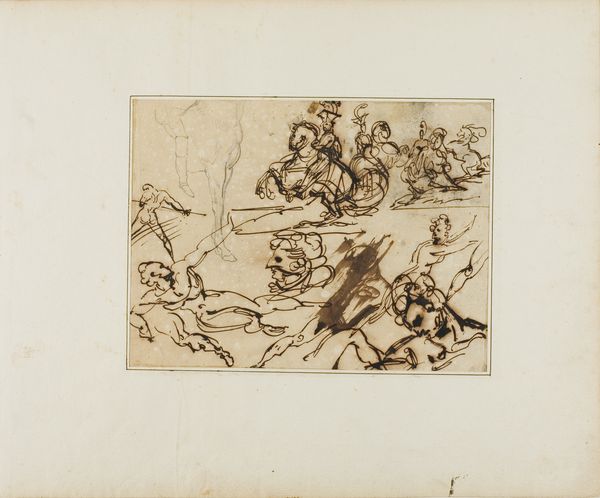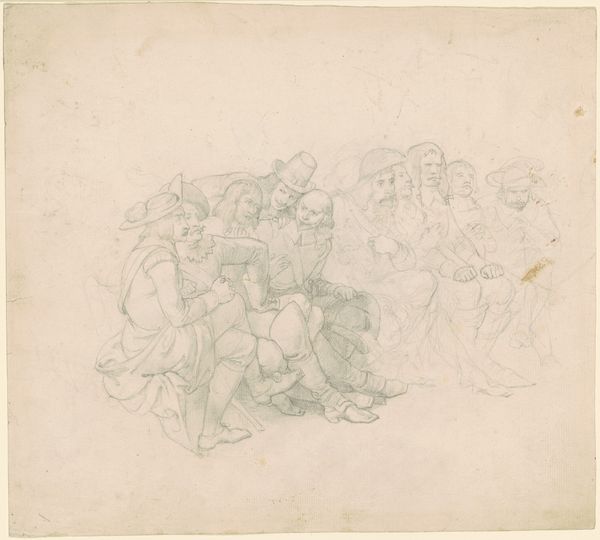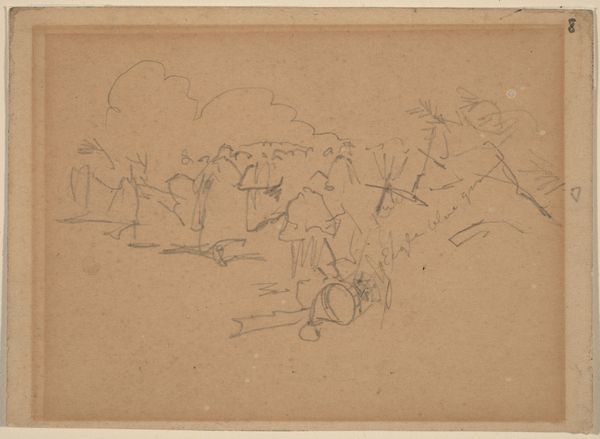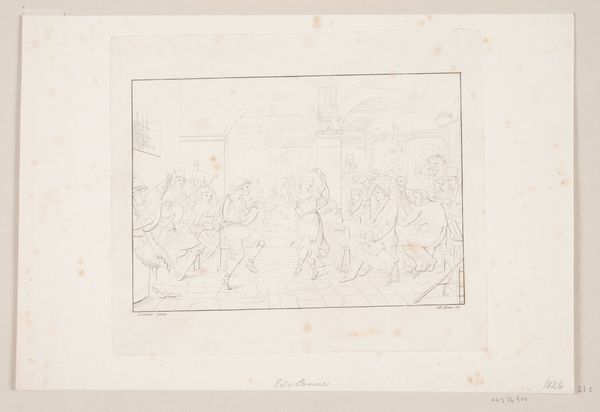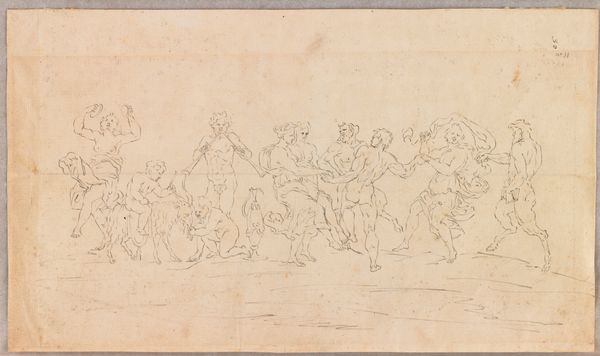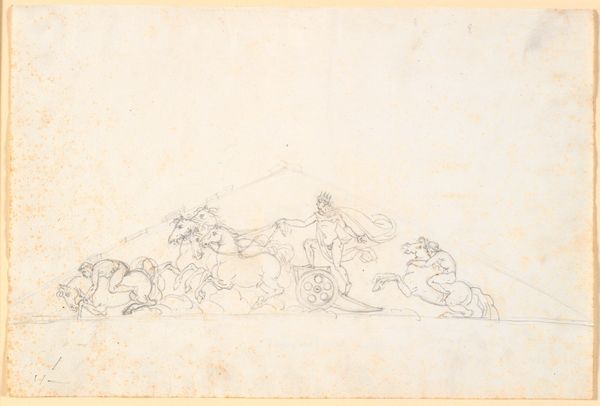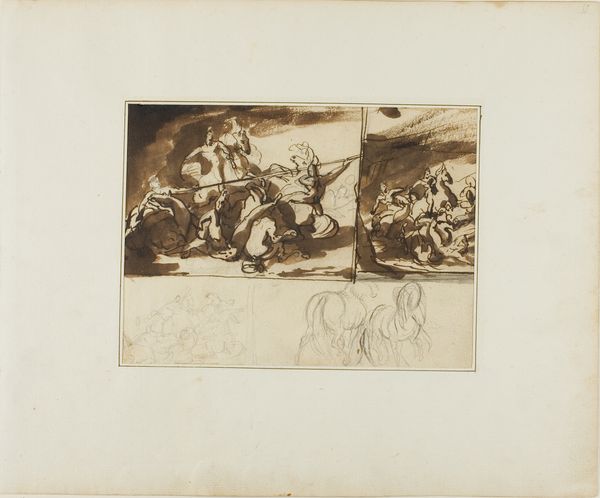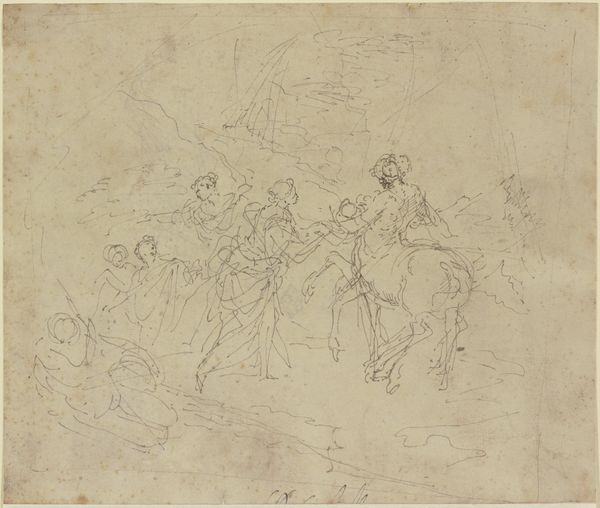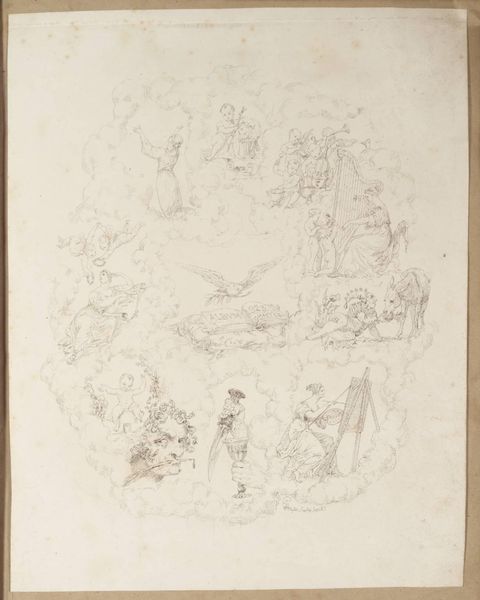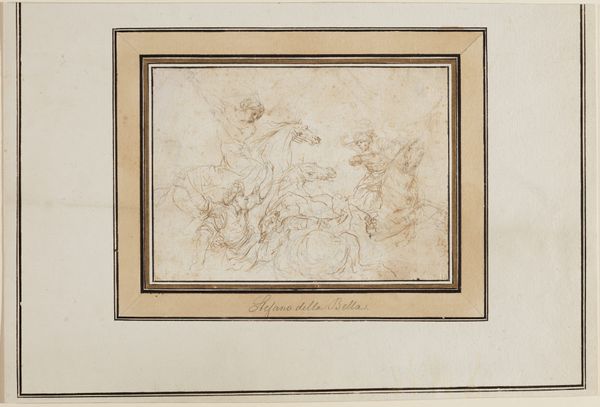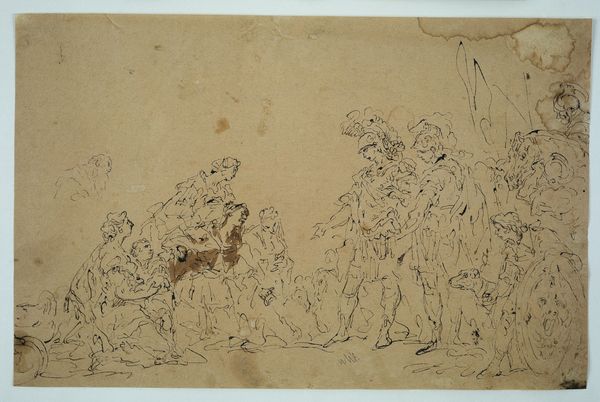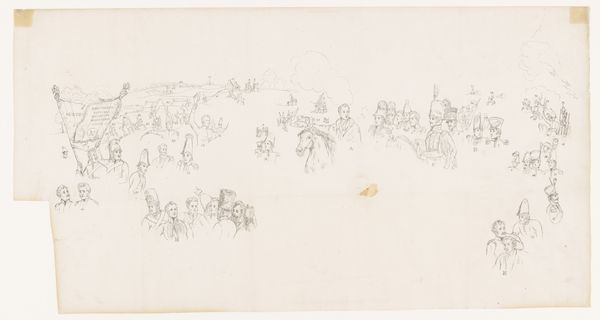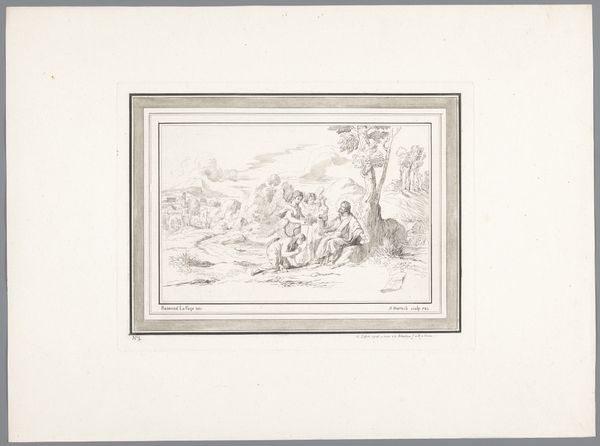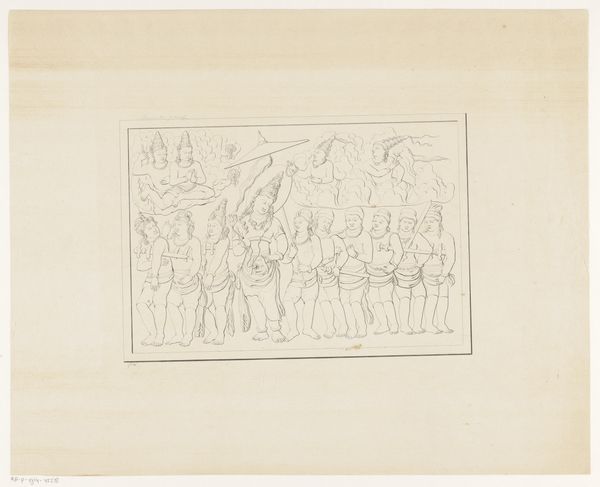
drawing, print, paper, graphite
#
drawing
# print
#
landscape
#
figuration
#
paper
#
romanticism
#
graphite
#
history-painting
Dimensions: 173 × 231 mm
Copyright: Public Domain
Curator: This graphite drawing, “Sketches of a Cavalry Battle,” was created by Théodore Géricault sometime between 1813 and 1814. It is currently held at The Art Institute of Chicago. Editor: My immediate impression is of frenetic energy, a swirl of bodies and barely-there lines. The composition feels both dynamic and incomplete. Curator: Given Géricault's later focus on history painting and the grand narratives surrounding conflict, I think it's useful to see this as a glimpse into his preparatory work. Consider how he uses graphite—a relatively inexpensive material—to explore complex scenes of war. The rapid execution and multiple sketches on a single sheet speak to a practical, almost workshop-like, approach. Editor: Absolutely, and notice the stark contrast created by the light paper, allowing the dark lines to seemingly jump forward, emphasizing the chaos of the battle itself. It’s all about the interplay of line and space. Observe, too, how he uses hatching and cross-hatching to create volume and shading, bringing a sense of depth and three-dimensionality to these preliminary figures. Curator: I would add that his labor involved producing these sketches not for a wealthy patron’s refined tastes, but possibly as studies for larger paintings intended to be displayed more publicly. It brings up the question of who would view these works, how they'd be received given their brutal subject matter, and Géricault’s role in visually processing these tumultuous events. Editor: Interesting point. Visually, I'm captivated by how Géricault creates a sense of movement. The way he overlaps the figures, the implied lines of force… it almost foreshadows futurism, doesn’t it? This evokes raw energy and immediacy, far removed from sanitized portrayals of war. Curator: It certainly disrupts notions of the heroic, wouldn’t you agree? To think about the production itself – the access to graphite, the cost of paper, the potential patronage—shapes our interpretation. Were these accessible studies, mass produced later? That knowledge changes how we see them. Editor: Yes, perhaps. I tend to see a deliberate study of form, line, and composition. It's how he orchestrates these elements, rather than some overt political messaging, that I find compelling. Ultimately, both elements coexist to deliver a piece that stays in your memory. Curator: Precisely, engaging with the art from production angle opens up broader discussions about artistic value and intention. Editor: I agree, seeing the interplay between raw visual energy and his construction makes this work unique and valuable.
Comments
No comments
Be the first to comment and join the conversation on the ultimate creative platform.
